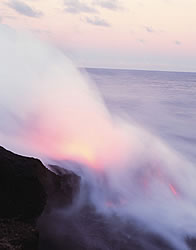Climate change effect on radioactive waste disposal
Researchers employed a hierarchical strategy consisting of three types of climate model for deriving the climatic changes for specific time periods. These model types involve an Earth-system Model of Intermediate Complexity (EMIC), a General Circulation Model (GCM) and a regional climate model. In particular for the EMIC, innovative features such as atmospheric forcing, ice sheet development and ocean changes were also developed. Application of these hierarchical models generated global data on climate and vegetation changes concerning different time segments over very long time scales. Three different statistical approaches were also developed in order to allow efficient downscaling of global model output to more suitable scales for the specific regions. All key mechanisms for long-term climatic variations were integrated in two differently structured dynamic models. Comparison between model results allowed researchers to explore the predictive potential of different climate models for the same future climate change. Within this context, variations in parameters, such as insolation and atmospheric greenhouse-gas concentrations, were taken into account in order to check if long-term climate followed different patterns of change. The application of the climate models provided valuable information for specifying model requirements of the post-closure radiological performance assessment of radioactive waste repositories. This allowed the development of a comprehensive methodology for biosphere system description in the long-term. All BIOCLIM results and information on the developed methodology addresses the needs of the international waste management community. For further details click at the project web site: http://www.andra.fr/bioclim(opens in new window)







